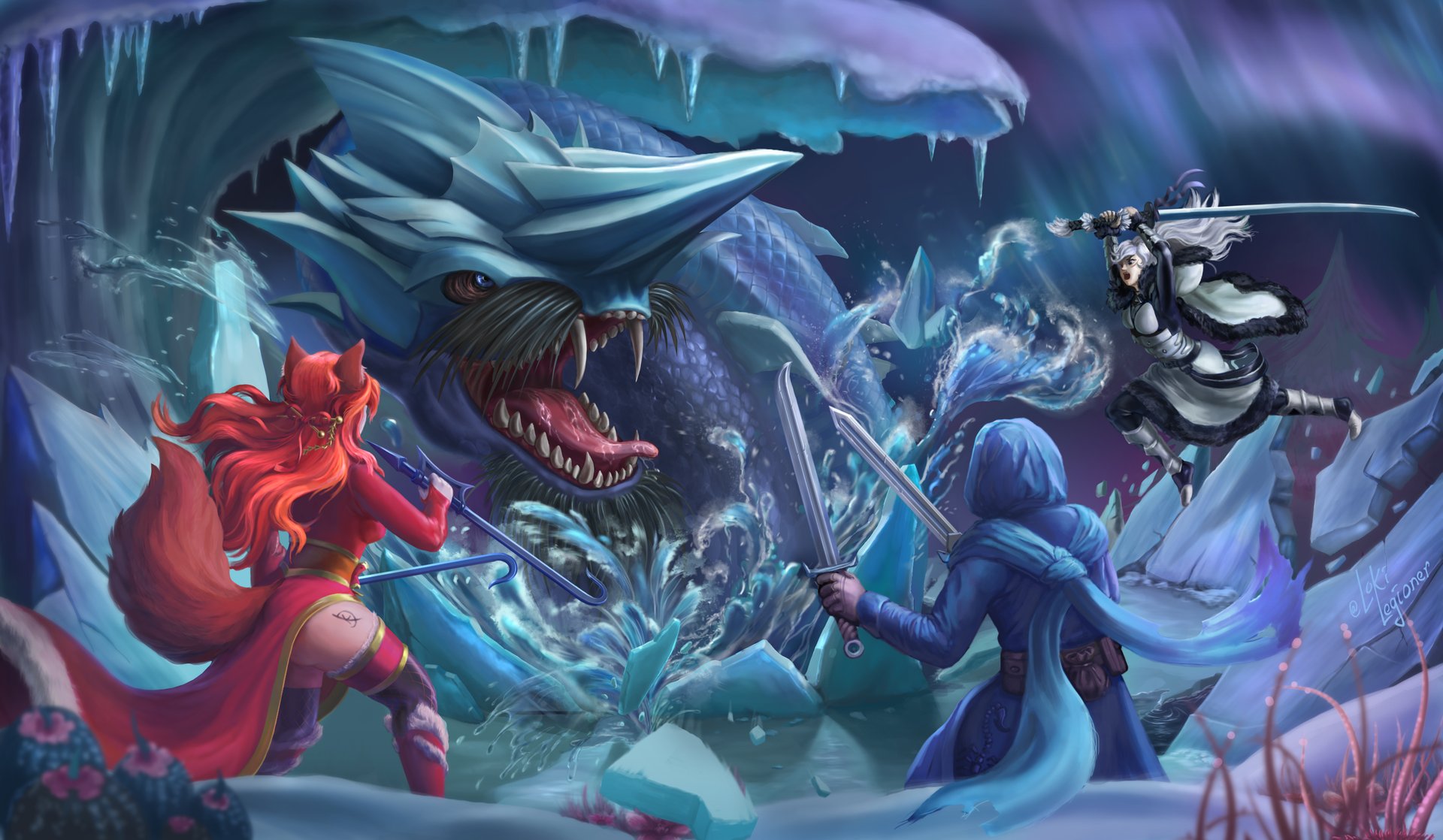
Monsters, Fauna and More

Great Beasts, Anomalies and Strange Plants
The Worldwalker Universe is full of many exotic beasts and creatures, all of which have their own place in the ecosystem.
Some, despite their size, are peaceful giants who prefer to mind their own business over seeking conflict with humanoids and other creatures. They are just animals, after all.
This section will not cover leytrees due to their immense importance in magic (although there will be a hyperlink to the leytree section eventually.) Leytrees are large trees with magic-infused wood and trees which can be made into extremely powerful magic equipment.
This page is a WIP and will be continuously updated (11/18/2025)



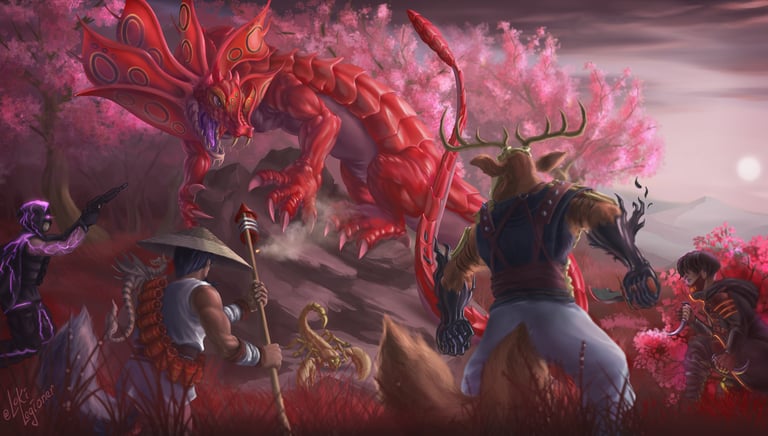

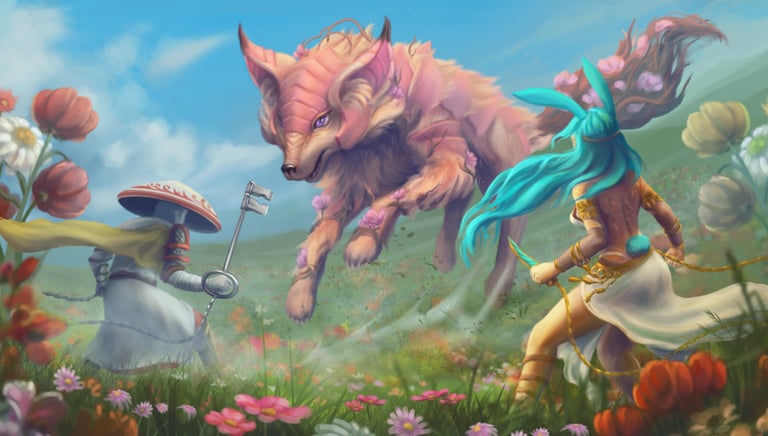

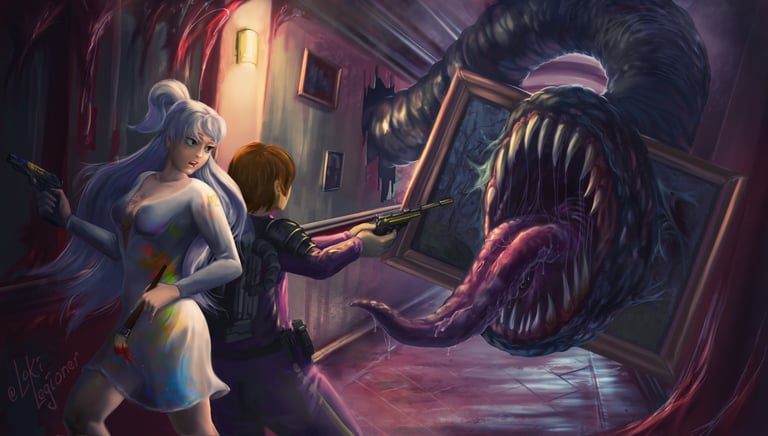


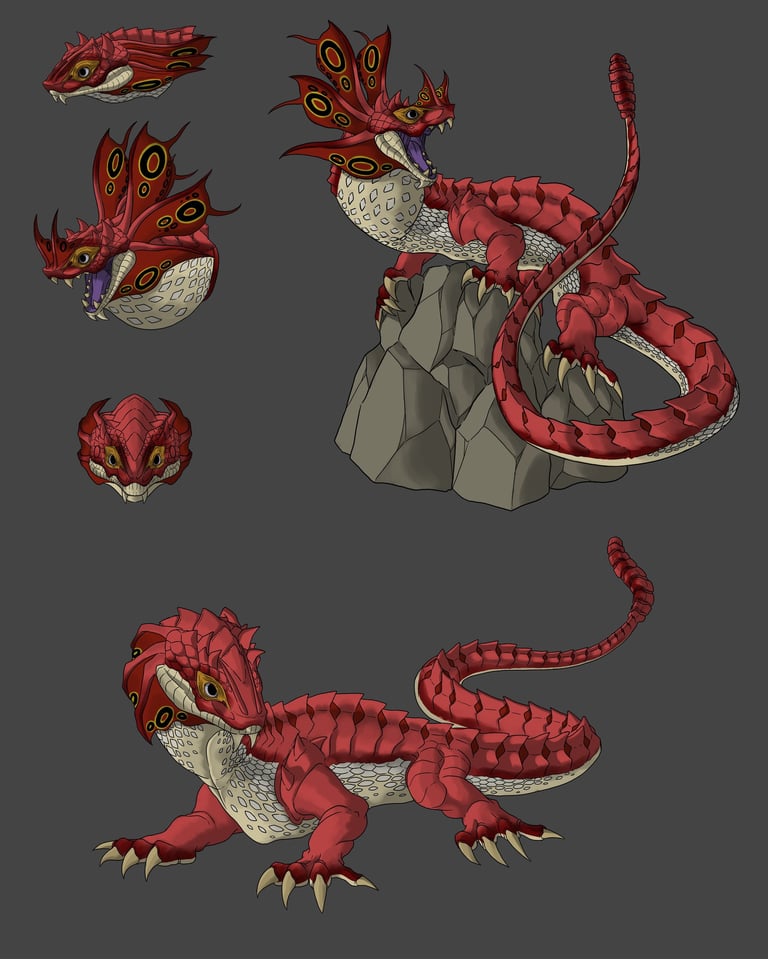

Frilled Rattler
Frilled rattlers are pack hunters from the plains of The Crimson Coast, well-known for their love of Pepper Munchers and their stunnning colors.
Each frilled rattler has their own unique markings and individuals can be differentiated by the rings on their frills. When angered, they will puff up their throats and frills to make themselves look bigger. Their tails are capable of producing a variety of rattling sounds, hence their name.
They prefer to lay in the long grass until prey passes by. Then, as a group, they will give chase - hoping to catch their target somewhat unaware. Despite their size, capable of reaching a staggering twenty-five feet long, they can be surprisingly quiet.
Frilled rattler packs are each led by a male alpha which is normally larger and stronger than the rest. Other members of the pack tend to be predominantly female, with males being forced out after reaching adulthood by the alpha.

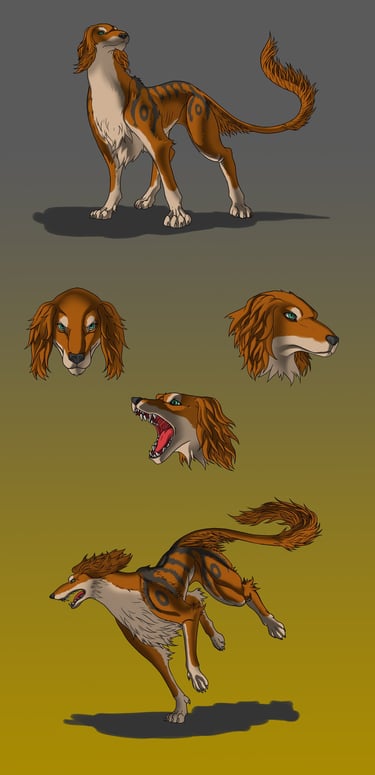

Stripehound
Stripehounds are quadruped animals native to Maru and The Crimson Coast. They're large dogs that can grow even larger than wolves and horses. Their name derives from the tiger-like stripes and large eyespots located on their upper limbs.
Despite their size they have relatively friendly dispositions and are fairly easily domesticated, so much so they're used for not only companionship but labor all over The Blightsteel Galaxy.
Monoka has two of these, Chou and Zen, who work alongside her during her escapades on Eternity's Isle. Likewise these hounds are often used for hunting and racing on The Crimson Coast.
They prefer to eat meat but have been seen snacking on naturally growing vegetation, specifically berries and sweet cane roots.
Most travel in packs of twelve or so individuals, led by a pair - a dominant male and female, both of whom take part in hunting, rearing children and defense of the pack.
Alone, most wild stripehounds will stay away from people. But if you see more than one, it may be time to vacate the area.

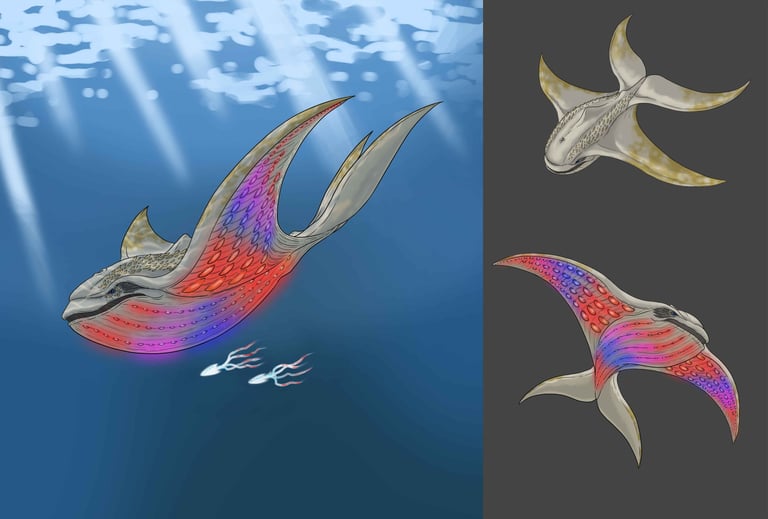

Pale Angel
Pale angels are a type of whale exclusively found on Aquillon. They're large, beautiful animals which are filter-feeders.
Pale angels are gentle giants and tend to mind their own business, although due to their immense size they can be a danger to nearby individuals. They use their bioluminescence to communicate and ward off potential predators while also drawing krill and plankton closer with a dazzling light show.
Pale angels can be nearly a hundred feet long with a "wingspan" of similar proportion. They travel in pods and little is known about their breeding cycles, however calfs tend to show up the most in shallow waters.

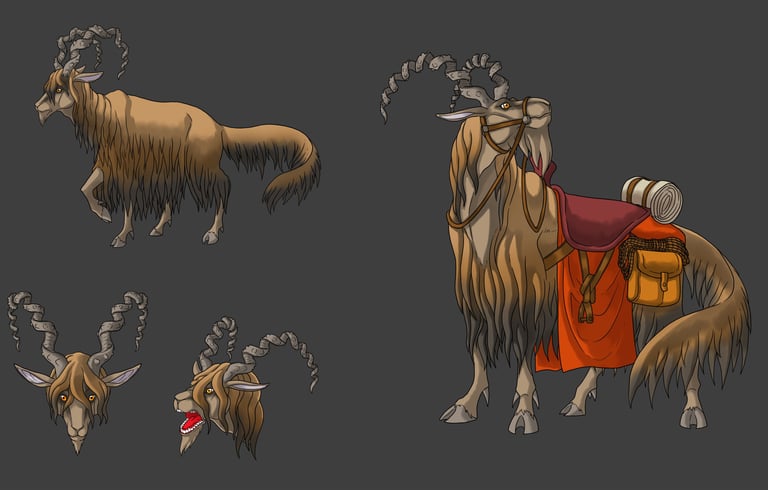

Longfur
Longfurs are large mountaineering animals found on the world of AV10. Sturdy, capable and extremely ornery, they make good steeds for those who may find themselves on uneven terrain.
Primarily consuming vegetation, the animals are fairly easy to take care of and are popular as beasts of burden. The Celestial Monks in particular favor them, adorning them in ornate saddles and saddlebags.
In some stories, longfurs are said to be guardians of the afterlife, working alongside deer and other similarly sized fauna to guard the underworld. They hold a great deal of religious importance in certain regions because of this.

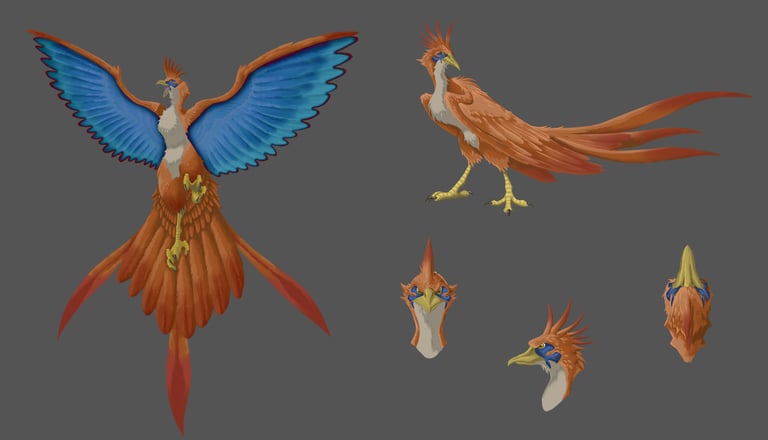

Saphix
Found on Shaia and particularly in The Crimson Coast region, Saphix birds are birds of prey and despite their beautiful colorations, are oftentimes considered pests in the region. Many a newbie adventurer or guild member finds themselves slaying these birds in an attempt to aid in population control efforts, as due to domestic overbreeding in the past their numbers have skyrocketed.
Saphix prefer to eat insects, smaller birds, pepper munchers and fish - specifically the redspitter, which they at one point nearly drove to extinction.
Thankfully in recent years the numbers of these birds have gone down to a more manageable level, however they are still regularly culled for their feathers and meat.

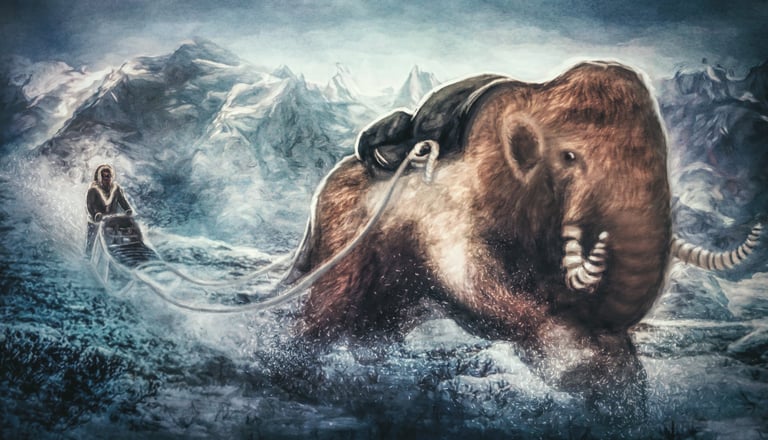

Maloth
Maloth are found predominantly on Shaia and are used in a number of races and other events during the Winterfest Season. These large beasts are similar to elephants or mammoths, however their horns are ribbed and they have large humps upon their heads.
They feast on berries and greenery found in the north, preferring to travel in herds of ten to twenty individuals while keeping near forests for food.
The creatures are hunted for their pelts and meat, both of which fetch a high price. In recent years their numbers have almost doubled due to the domestication of them for both furs and racing.

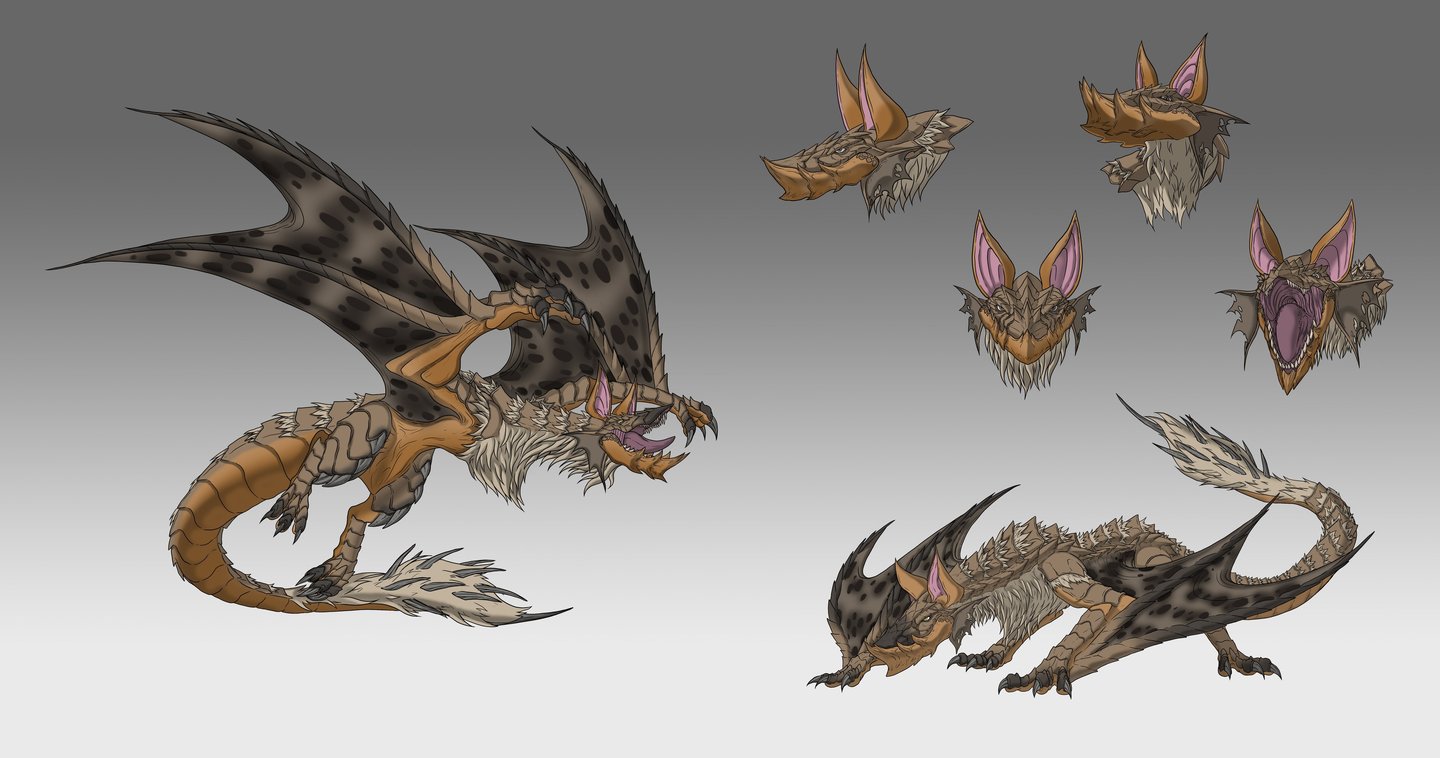

Cat Wyvern
Cat wyverns are found mostly on Metropolis II, however in recent years they've become more widespread all across the galaxy due to them being popular pets. They range in size, from under size inches to over three feet in length. They have generally friendly dispositions and get their names due to their large cat-like ears and the fur around their necks and poking out from the cracks in their plating.

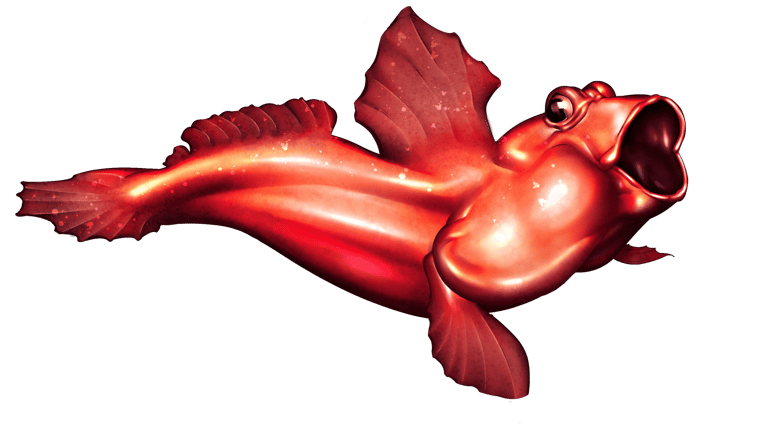

RedSpitter
Redspitters are large fish found commonly on Shaia. They eat insects and small things that falls into the water. However, the fish themselves are capable of growing nearly three feet long. Once it reaches this size after about a year of maturity, it will start hunting for other fish and anything small enough to fit in it's mouth.
They're notoriously aggressive and capable of living out of the water for upwards of twelve hours. They have long, frog-like tongues and are similar to mudskippers. Unlike mudskippers, however, they're well-known for spitting water at passersbys in an attempt to ward them off.

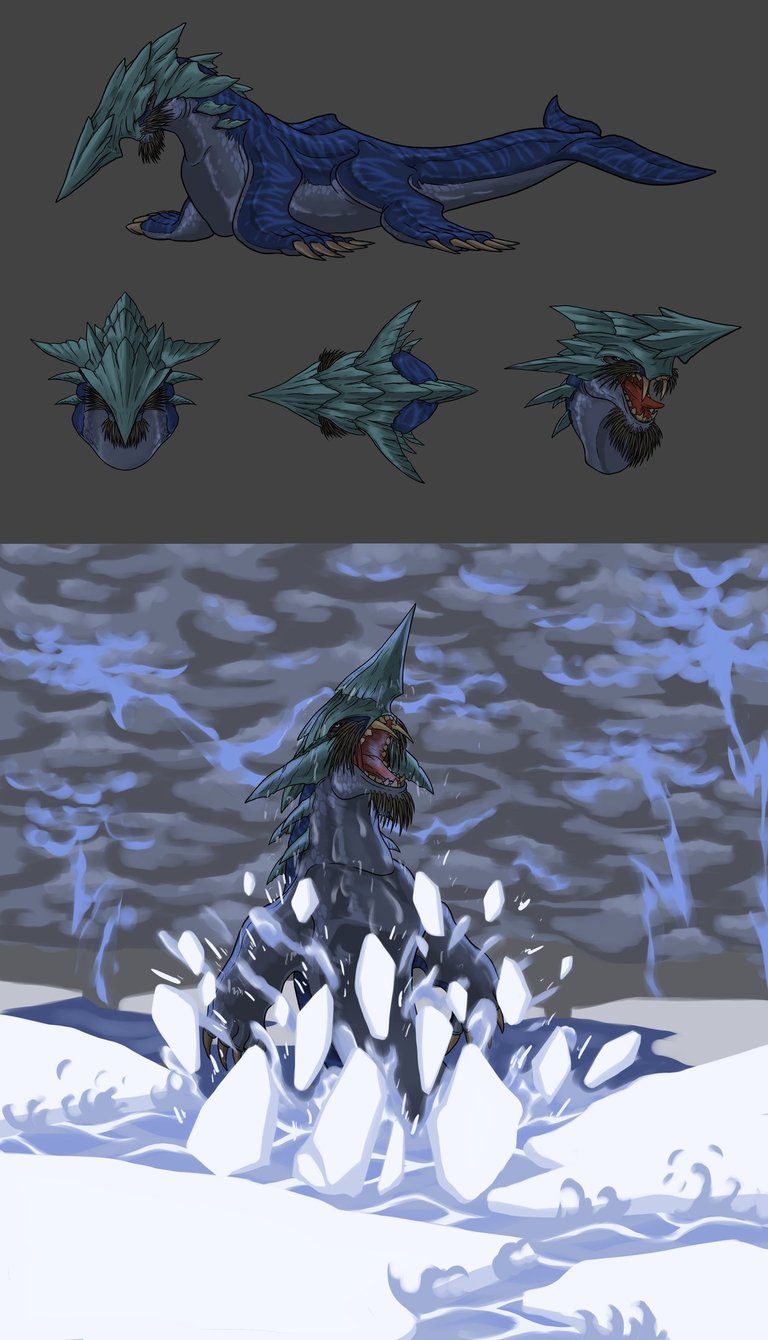

The Azure Shredder
Azure shredders are large, blubbery creatures found in the northern regions of Nexion.
Their ornate heads are often used to adorn ships and family rooms as the beautiful blue spikes and spear-shaped drill are seen as proof of conquest.
Great hunters will spend a considerable amount of time tracking down these beasts, and taking one out is often seen as a rite of passage in some cultures. Every part of the beast is useful, from its body fat to its sturdy bones. Even its tongue and organs are considered a delicacy.
However, taking one of these down is a huge ask.
They fight viciously and are extremely territorial, with males spending countless hours patrolling their territory. Females are slightly smaller, but with double the attitude - and if you come across pups, you best hope their mother is far away.
Azure shredders are also known by a local name, the Aluke. They use their spikes to pierce through the ice, ambushing prey that believed themselves to be safe.
While males are solitary, females prefer to travel in large groups with their pups with a single dominant male heading the pride.
These beasts have also become symbols of the holliday winterfest, with small plushies and toys being made of them. A popular early gift is a "Aluke Gun" which is a harpoon gun made to pierce their hide.


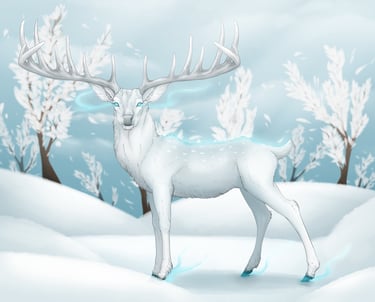
Satet
Satet is a beautiful deer which lives in the northern region of Elatriel, although little is known about it and its existence is mostly a rumor.
What is thought to be known is that it is capable of great acts of magic and has a pelt white as snow. It can also cross water by freezing it with its hooves and will often do so to reach berries and what greenery grows in the northlands.
Naturally it is fairly timid, preferring to avoid interacting with humanoids and sapient life. However, when angered, it will seek out the cause of its ire - generating a region-wide blizzard which disrupts travel and much more via the creature's powerful magic.
The subject of many stories and of great interest to organizations like The Trophy Organization, Satet is a holiday symbol of Winterfest. You can learn more about Winterfest in the holiday tab!

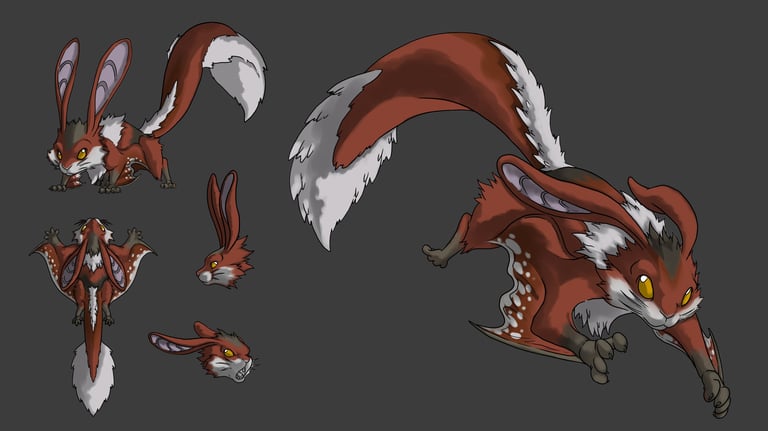

Pepper Muncher
Found predominantly across The Crimson Coast, many first-time guildees find themselves hunting these on behalf of the guild for their pelts and to aid in their explosive population booms.
These creatures are considered pests, although some say they make good domesticated pets. Theyre known for gliding from tree to tree and scurrying through pushes to find various nuts and berries which they eat greedily.
Come winter, most go into hibernation.
